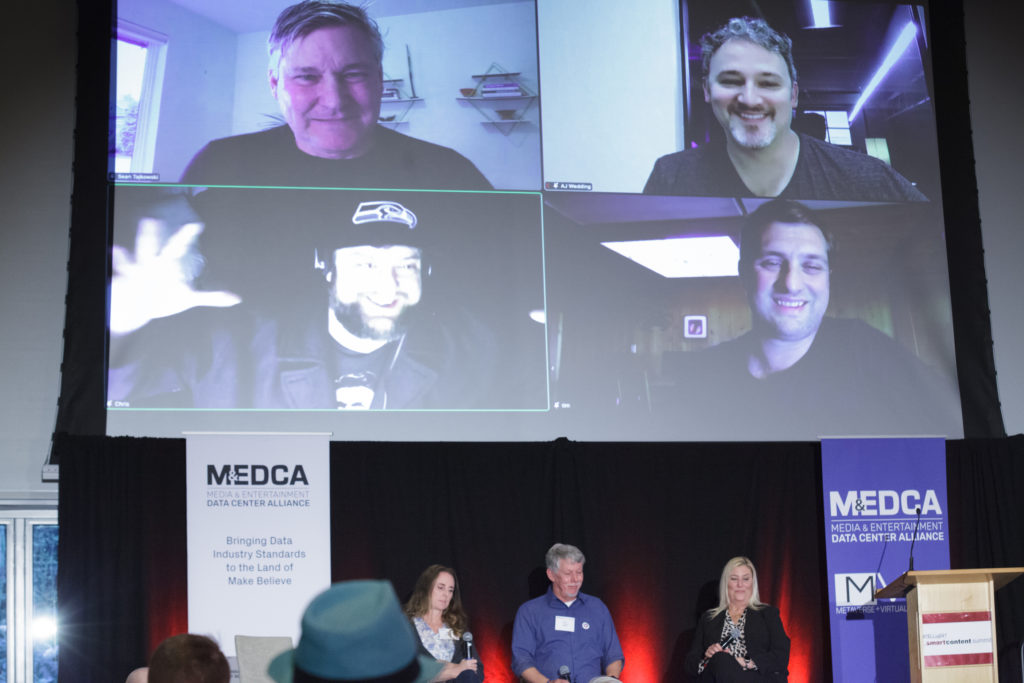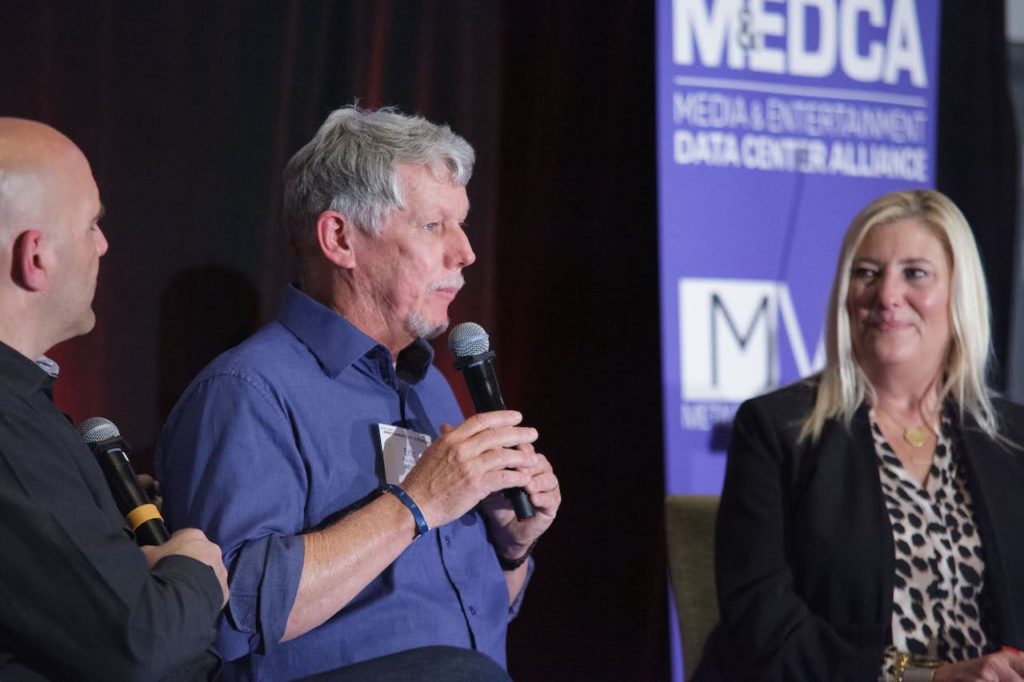M+E Daily

Smart Content Summit: Exploring the Challenges and Opportunities of the New Remote Ecosystem
Story Highlights
As production companies increasingly turn to virtual production and remote technologies, they’re seeing challenges and opportunities that are available to them with this new ecosystem, according to industry executives and Crafty Apes VFX visual effects supervisors, who spoke March 10, during “Smart Connected Stages: The Great Build is Underway!,” one of a series of Media & Entertainment Data Center Alliance (MEDCA) presentations that were held during the Smart Content Summit in Los Angeles.
With Hollywood’s frenetic adoption of virtual production, remote technologies and their accompanying data-centric workflows, the media and entertainment (M&E) industry is moving rapidly and deeper into the well-established paradigm of the data industry.
Multiple supporting verticals and their governing bodies protect the data industry. As a result, robust sets of infrastructural standards and practices are pre-established and readily available for the Hollywood community to adopt and implement.
But lack of awareness puts production stages and post production facilities at great risk – financially, when it comes to security, and ultimately with customer service also.
The MEDCA Smart Content Summit session gathered a few of the players at the forefront of the “next great build” to discuss the challenges and opportunities in this emerging industry ecosystem.

Exponential Growth
Visual effects and production services company Crafty Apes has “experienced exponential growth” over the past few years, according to panel co-moderator Sean Tajkowski, MEDCA technical director and co-founder. Crafty Apes went from about 100 artists to about 500 artists now, he noted.
“Everything’s crazy right now” in the industry, according to Tim LeDoux, Crafty Apes VFX visual effects supervisor, who acknowledged the growth of his company. “There’s so much work to be done and it’s a great time to be innovative. We have to be. There’s no choice. The pandemic really spurred that for us and we had to adopt quickly,” according to LeDoux.
“We were in a good spot because, luckily, we had already used Teradici … in our workflows,” he pointed out, explaining that, as a result, “when the time came to work from home, we pretty much made that switch.”
Crafty Apes “had no idea how well it would work or what would happen,” he conceded. But he said: “It’s been fortunate because, surprisingly, it’s worked remarkably well – way better than we ever thought it could work, and I think, every single day, we’re finding that out more and more.”
Noting that he was on the phone that morning with an artist in Macedonia, he said: “I just couldn’t believe I was really having that call. I’m talking to somebody in Macedonia. We’re going to bring him on. We’re going to put him to work. We need artists right now and we’re finding them all over the globe. We’re building an infrastructure that can really reach anyone in the entire world. That’s the goal. We never had that opportunity before and we have an opportunity now. And it’s really changed everything and every way we look at everything. In general, we’re still opening our eyes to what that really means.”
Crafty Apes is “kind of like a platform,” he went on to say, explaining: “Essentially, we’re building a global platform for people to do visual effects work [and] to learn how to do visual effects work – to do it well. And our job is to provide for them that ability, to make sure they have a good experience, to make sure that everything works.”
Remote Work Doesn’t Work for Everybody
There are, meanwhile, “psychological impacts” from the pandemic that “we’re still dealing with” in the sector, according to Chris LeDoux, another Crafty Apes VFX visual effects supervisor.
“I think our divorce rate’s gone down by 50 percent so that’s good,” he said, at least in part jokingly. But he said: “The hardest part is with the juniors,” the younger people, who “tend to learn through osmosis” and, when they’re working in an in-person environment, “they gather information from each other.”
As a result of remote work, he said, “it’s our new draft class that is having a hard time with things,” trying to adopt.
Some people are the types who are self-taught and can figure things out on their own, he told viewers, noting, “the veterans are fine.”
Crafty Apes has given everybody who works for it the option of working from home or coming to the office, he pointed out, adding: “In Atlanta, we have over 200 artists and, out of 100 people, I think four people decided to come back into the office.”

The Joy of Instant Feedback
Clients of virtual production company Orbital Studios have come to it with their own artists and “sometimes these artists are from disparate areas and they don’t necessarily know specifically how to build for virtual productions,” according to A.J. Wedding, Orbital’s co-founder.
Therefore, it is nice to have “instant feedback” so Orbital can give those artists notes “far in advance of them showing up to the stage, so that when they get here, it just works,” he said.
Preproduction + Virtual Production
At this point, when it comes to preproduction and virtual production, “if you don’t have one, you don’t have the other,” according to Eric Rigney, MEDCA EVP.
He also stressed having the right ecosystem to be able to collaborate, which requires solid connectivity and an infrastructure that can support that connectivity.
Noting the complexity of “marrying movies and software and infrastructure,” Anna Claiborne, PacketFabric CTO and co-founder, said that’s “one of the reasons why everything has to be extremely easy to use.
There is, after all, “enough complication already,” she said. Being able to “point and click” to do things is pretty much essential – but contractual terms must be simple also, she noted.
Claiborne also stressed the importance of being able to maintain power at all times during a production, saying a virtual studio “needs to be built stable redundantly.”
Lisa Griffin, MEDCA executive director, co-moderated the panel with Tajkowski.
To listen to the presentation, click here.
The 2022 Smart Content Summit event was held in conjunction with the EIDR Annual Participant Meeting (EIDR APM), and was presented by Whip Media. The event was produced by MESA, in association with the Smart Content Council and EIDR, with sponsorship by BeBanjo, Signiant, Qumulo, Adio, Alteon, Digital Nirvana, Slalom and Rightsline.









